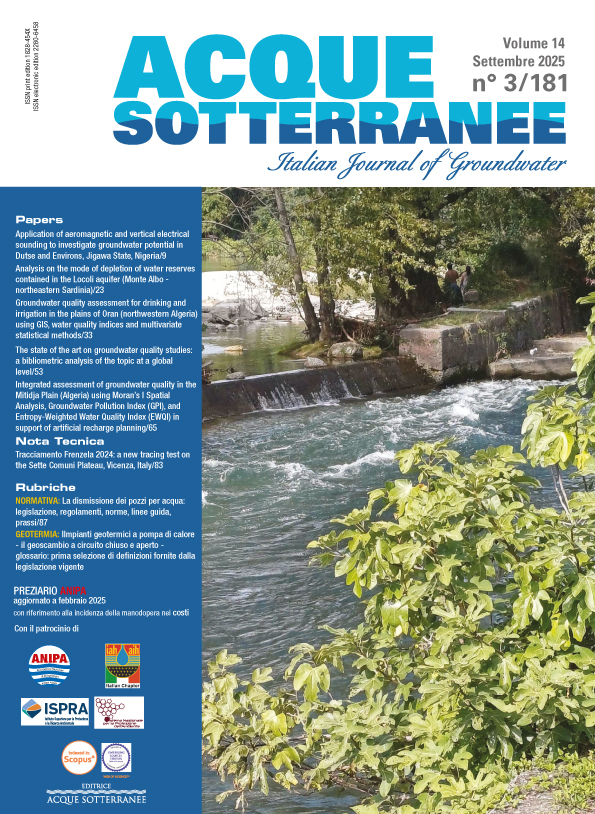Groundwater quality assessment for drinking and irrigation in the plains of Oran (northwestern Algeria) using geographic information system, water quality indices and multivariate statistical methods

All claims expressed in this article are solely those of the authors and do not necessarily represent those of their affiliated organizations, or those of the publisher, the editors and the reviewers. Any product that may be evaluated in this article or claim that may be made by its manufacturer is not guaranteed or endorsed by the publisher.
Authors
In the southern plains of Oran, the two main aquifer formations are the Mio-Pliocene limestone and the Plio-Quaternary conglomerates. To assess the overall quality of groundwater, and highlight the factors and mechanisms controlling its chemistry, hydrogeological and hydrochemical data are studied using geographic information system (GIS), multivariate statistics (principal component analysis [PCA] and hierarchical cluster analysis [HCA]), potable water quality indices (PWQI), and irrigation water quality parameters. The results show that the Mio-Pliocene aquifers have the best groundwater, with some samples having a mineralization of <1g/L, whereas the quality of groundwater varies in the Plio-Quaternary aquifers from one location to another. The increase in groundwater concentration generally occurs from South to North, in accordance with the direction of groundwater flow towards the Sebkha of Oran. The PCA and HCA results show that groundwater is divided into two major groups. The first represents fresh to passable waters (0.5 g/L ≤ TDS ≤ 2 g/L) located predominantly in the Tessala Mountains piedmonts and around the Tafraoui-Tlelat limestone outcrops. These groundwaters have a low Langelier index (LSI ≈ 0.25) and are neither corrosive nor scaling. The second group represents slightly saline to highly saline groundwater (2.5 g/L ≤ TDS ≤ 5g/L). The slightly saline groundwaters are mostly observed around and South of Ain Larbaa in the Plio-Quaternary conglomerates. The highly saline groundwaters are only observed for 6 samples and are most likely the result of contamination. The PWQI show that only 18% of groundwater is fit for human consumption; the remaining groundwater ranges from poor (21%), very poor (38%), to unsuitable (23%). The results also show that only 60% of samples are suited for irrigation. The hydrochemical results identify geological zoning, climate aridity, and to a lesser degree anthropic activities as the major factors regulating groundwater quality via the carbonates and silicates weathering and ion exchange process.
How to Cite

This work is licensed under a Creative Commons Attribution-NonCommercial 4.0 International License.








